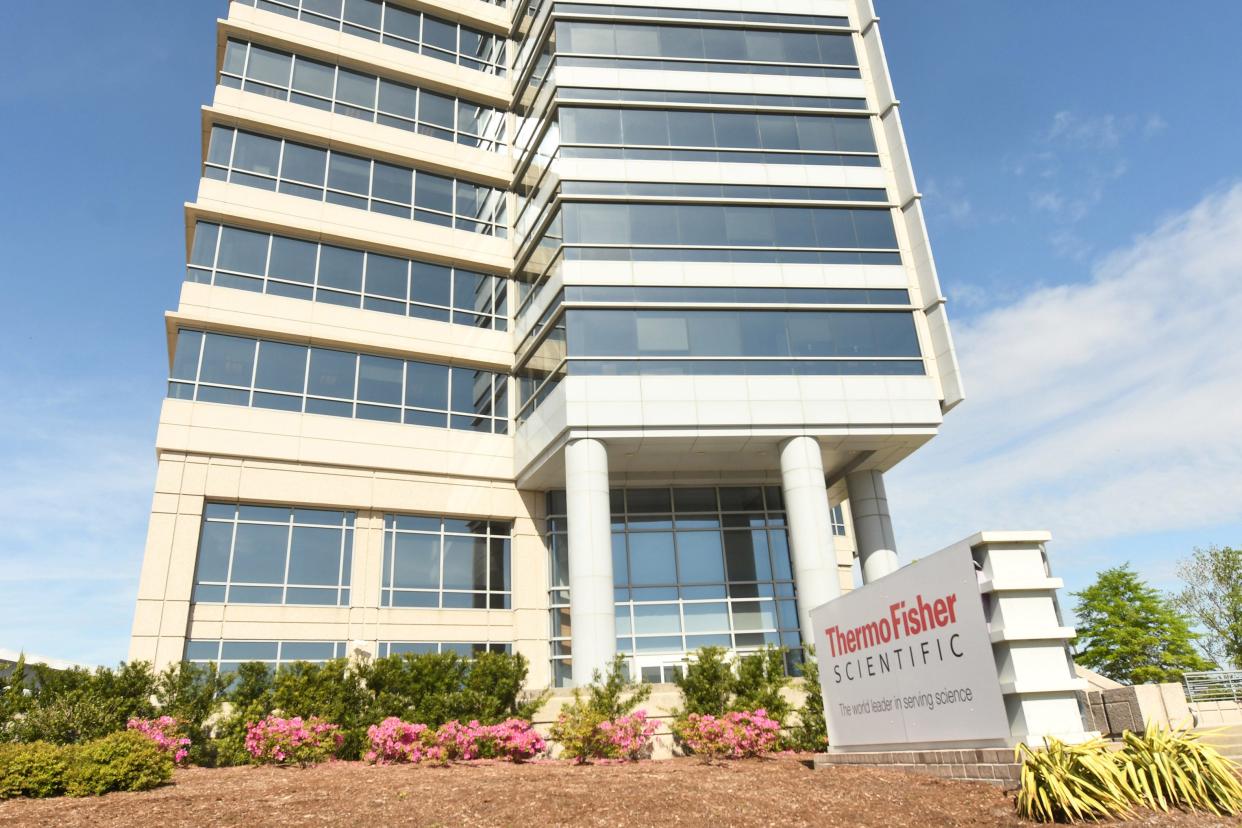As PPD building purchase nears, city prepares to flood market with excess office space

With the necessary approvals in place, the city of Wilmington's plans to purchase the former PPD building is nearly complete, and as a result, Wilmington’s commercial market is set to experience some major changes.
Once the city closes its PPD building purchase, it plans to flood Wilmington’s commercial real estate market with tens of thousands of square feet of surplus office space. With its new 12-story skyscraper and surrounding campus, the city’s current office spaces will no longer be needed and therefore will be sold off.
But all of this comes as concerns continue to bubble up nationally over a looming crisis in the commercial real estate market.
In April, Morgan Stanley noted that commercial real estate prices nationally were already starting to decline and predicted in the coming years prices could fall as much as 40%, “rivaling the decline during the 2008 financial crisis.”
Long-term effects from the COVID-19 pandemic such as the rise of remote work, mixed with high interest rates, are putting stress on the commercial real estate market. While Wilmington’s real estate market has held up remarkably well in recent years, adding a significant amount of office space could either spark new economic growth or causes prices to drop and vacancy rates to rise, according to Mouhcine Guettabi, regional economist for the University of North Carolina Wilmington.
The backstory
The city is set to close on its purchase the 12.5-acre campus this month for $70 million. The purchase will include the former PPD building, now owned by Thermo Fisher Scientific, two adjacent pieces of land and more than 1,500 parking spots. The city has previously stated it plans to use the campus to consolidate its offices into one place.
Right now, the city of Wilmington’s offices are siloed into a number of buildings throughout downtown. The city council previously approved a resolution that would declare nine city-owned properties as surplus once Wilmington completes its purchase of the PPD building.
"City council declared several office buildings as surplus property contingent on the acquisition of the new campus in northern downtown," according to a statement from Dylan Lee, a city spokesperson. "Once the city closes on the new campus, a timeline will be put in place for occupying that facility and vacating surplus office buildings. At that time, a schedule will be put in place for the sale of surplus properties."
Among the properties that could be declared as surplus and sold are the city’s offices at 305 Chestnut St., Wilmington’s IT offices at 315 and 319 Chestnut St., the Harrelson building and its corresponding parking deck at 115 N. Third St. and 210 Chestnut St., and several other buildings located in downtown.
Timeline: Here's what's next for the city's purchase of the former PPD building
What's happening across the country?
During the first quarter of 2023, U.S. office leasing volume fell by more than 10%, according to JLL, a national commercial real estate company, which manages approximately 4.6 billion square feet of properties and facilities. Vacancy rates rose to 20.1% in the first quarter as well.
Nationally, companies are reassessing their needs when it comes to office space, Guettabi said. Many are choosing to downsize or get rid of their offices altogether, creating downward pressure on commercial real estate.
That softening demand, plus higher interest rates, are making it more expensive to finance and pay for these buildings, are creating concern nationally, “… about the potential decline in prices in the commercial office space,” Guettabi said.
What's happening nationally: Commercial real estate is headed for a crisis worse than 2008, Morgan Stanley analysts say
What could happen locally?
Selling these surplus properties would not only help offset the $70 million price tag associated with purchasing the PPD building, but it would also allow the city to get rid of space it would no longer need.
Some, including Mayor Bill Saffo, believe the sale of the city’s existing downtown spaces could spark additional economic development.
Whether the potential sales could spark economic growth depends on how much pent-up demand there is, Guettabi said.
If there’s a lot of demand, these new spaces could give businesses places to grow or start up in. However, if the demand can’t keep up with this newfound supply, the city’s surplus properties could drive vacancy rates up and cause prices to drop.
Wilmington’s real estate market has a vacancy rate right now of just 2%, as of the fourth quarter of 2022, according to the National Association of Realtors.
On top of that, the region’s labor market is doing well, and the rise of remote work hasn’t affected the area significantly. As of October, Wilmingtonians were only spending 11% less time in the office as compared to pre-COVID, according to Guettabi, who sourced his information from Google mobility data.
“When you make decisions like this, I’m assuming the city is thinking long term, and they’re betting on the long term economic well being of the community,” Guettabi said. “They think that demand, even if it softens in the short run because of these national, macro-economic factors, that the city will be in good economic shape 10-20 years.”
STAY CONNECTED: Keep up with the area’s latest news by signing up for the Daily Briefing email newsletter.
This article originally appeared on Wilmington StarNews: As PPD purchase nears, city plans to sell offices amid a looming crisis

